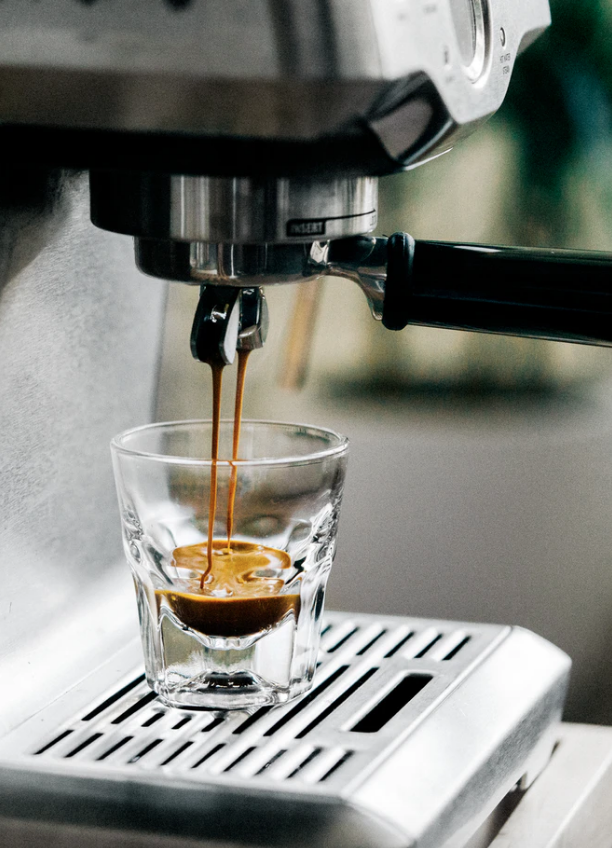6 Benefits of a Coffee System

The modern coffee system can cover everything from grinding coffee to frothing milk – all at the touch of a button!
 Photos By: Unsplash
Photos By: Unsplash
Innovation and better technology combined continue to make home appliances better, and coffee systems highlight this development. The coffee system as a term can be somewhat a misnomer since it represents a category of appliances rather than a single machine. However, even at the baseline, modern coffee systems tend to be full-featured and offer a wide range of options and services.
1. Choice Of Beverages
A drip coffee maker will get you a cuppa when you desire. An espresso machine will whip up a nice espresso. Fancier espresso makers might even get into some latte action with frothed milk. Most coffee systems will handle these requirements with ease. All you have to do is decide what beverage you want – and hit a button. Available options can vary depending on the model. For example, some will allow you to choose the favored beverage and the brew size. Others might follow a recipe. In any case, you get a large range of options ready to roll at your will.

2. Convenience In Use And Operation
A wider range of beverages is one aspect of coffee systems – they thrive on consumer convenience. This isn’t supposed to be a machine where you carry water to the reservoir, measure up beans and grind them, and fidget with control options. The coffee system is supposed to do all that by itself. The machines usually have integrated coffee grinders that precisely measure the amount of coffee required and grind the beans. Or they’ll pick ground coffee depending on user directions. You might still have to fill up on coffee beans. As for water, the coffee machine connecting to water line directly is the norm here. The user never has to refill the reservoir or check availability. An added advantage of this setup is that the machine can be quick to action. The expected time for your brew is substantially reduced. Plus, there’s always hot water on tap, so options like instant soup, green tea, and noodles too become relevant.
3. Top Quality Brewing
All factors aside, what good is a coffee machine if it can’t brew a decent cuppa? Thankfully, coffee systems are pretty serious in this aspect. The coffee brewed is always the best quality and related factors are thoroughly managed. For example, the water temperature is maintained in the recommended 195-205 °F range. When brewing espresso, you can expect the pressure to be at 15 bar, which is the recommended level for top-quality brewing (the minimum being 9 bars). Similarly, milk temperature, proper frothing, and adding milk according to the recipe are all deftly managed. Whether you choose a macchiato or a cappuccino, the machine does its best to brew it right.

4. Less Clutter
The use of a coffee system means there will be less clutter in your kitchen. A bunch of appliances are integrated into the system. These include the coffee maker, coffee grinder, milk frother, and water delivery system. With all these put together, you have just one machine to consider rather than several appliances. Many coffee systems come with a built-in installation option. Rather than sit as a large piece on the kitchen counter, the coffee system could be integrated into the decor. The built-in model frees up counter space and opens up more possibilities towards placing the coffee system.
5. Automatic Maintenance Options
Coffee systems aren’t cheap. And the best way to keep your expensive machine in top condition is to perform regular maintenance. Considering that these machines have integrated mechanisms like the water line and grinder, conventional maintenance methods aren’t possible. Expect to spend more effort and money in maintaining the coffee system. Thankfully, the coffee system doesn’t want to be a pain to maintain. It must be convenient above all else. Therefore, these systems include automatic options to avoid frequent manual intervention for maintenance. A very simple example is running water through the machine to remove any possible blockages. Pipelines for water and milk are regularly rinsed so there is no buildup that can cause problems. Coffee systems usually include automatic diagnostics to check and ensure that all parts are working well and as required.

6. Generally Better Build Quality
As we see, coffee systems are expensive machines. Apart from the initial cost, they also cost a pretty penny in installation and maintenance. This is not an appliance you’re supposed to buy often. It’s one that’s supposed to run for years (if not decades)! Manufacturers are well-aware of these sentiments, and so the coffee systems are built to the best standards. Flimsy and cheap parts are avoided, to say the least. For example, plastic pipes and heating chambers find no place on these high-end machines. Instead, they’ll use robust (and incidentally, healthier) picks like steel. This concept extends to exteriors as well, with robust components taking priority. A coffee system therefore stays dependable and long-lasting.







Leave a Comment